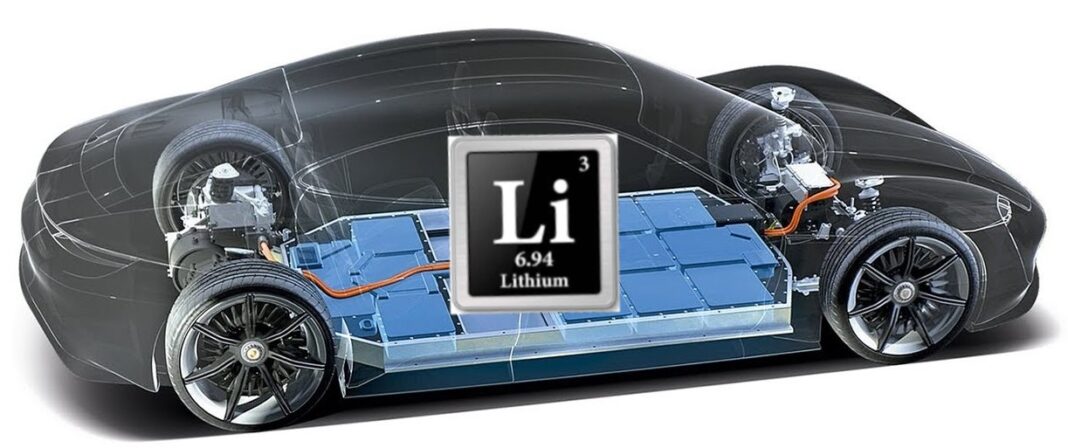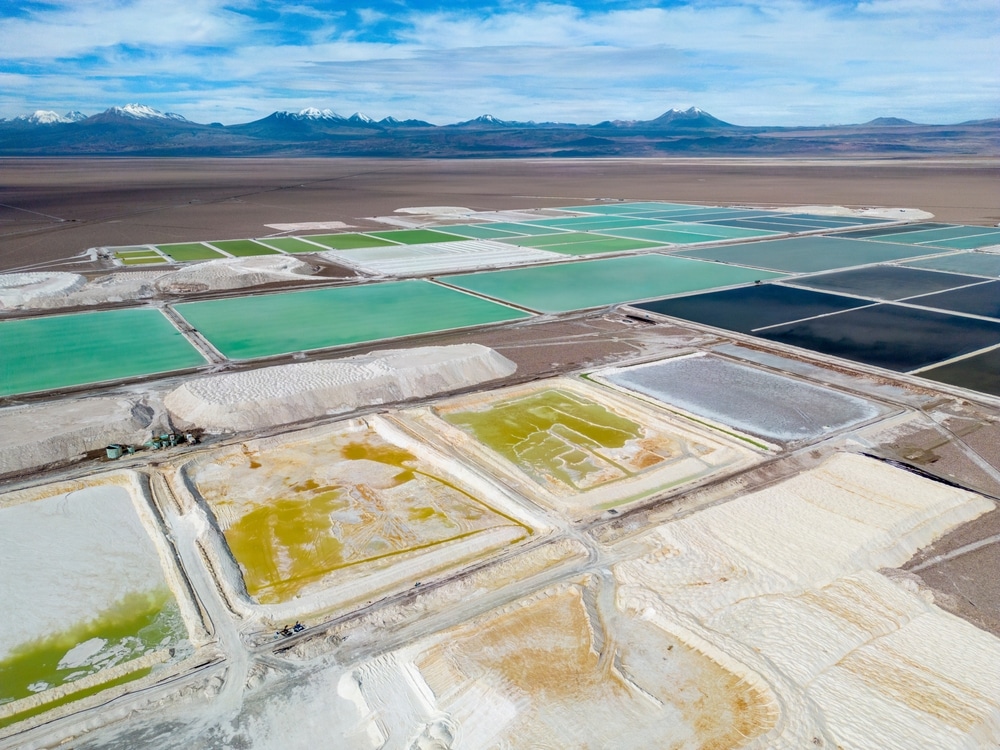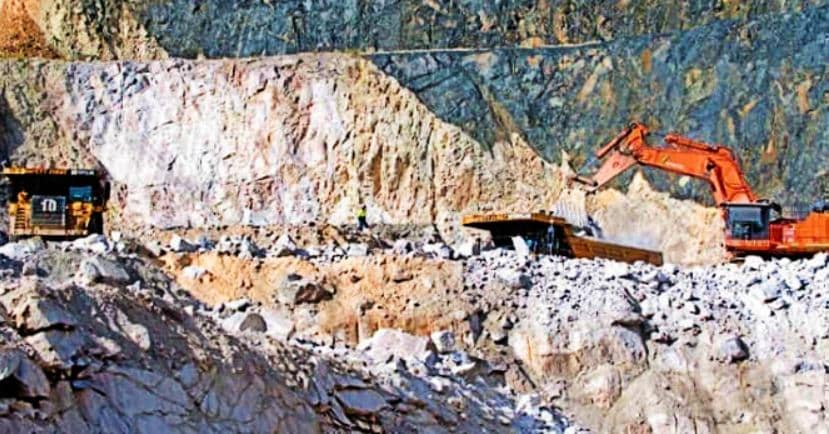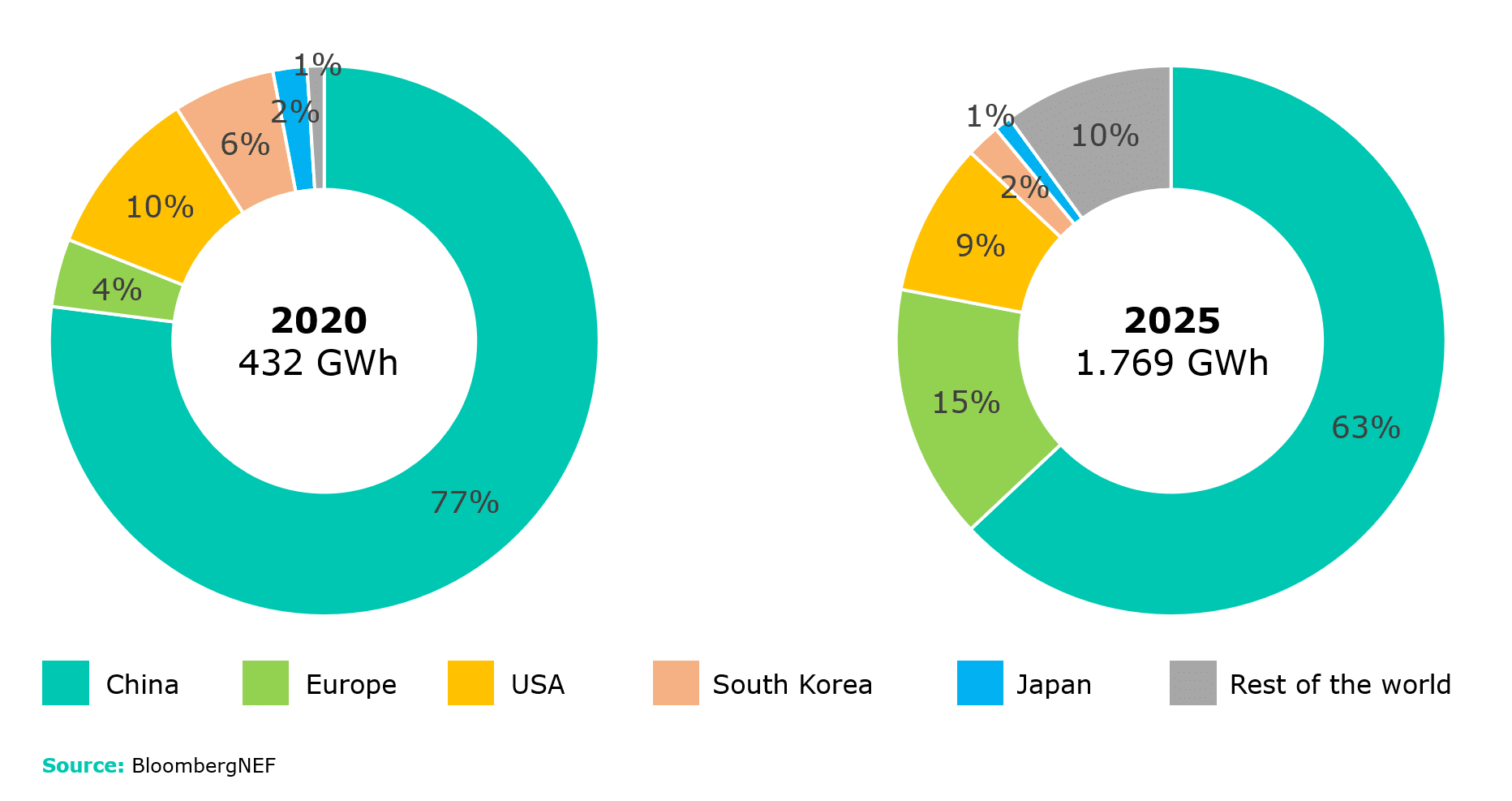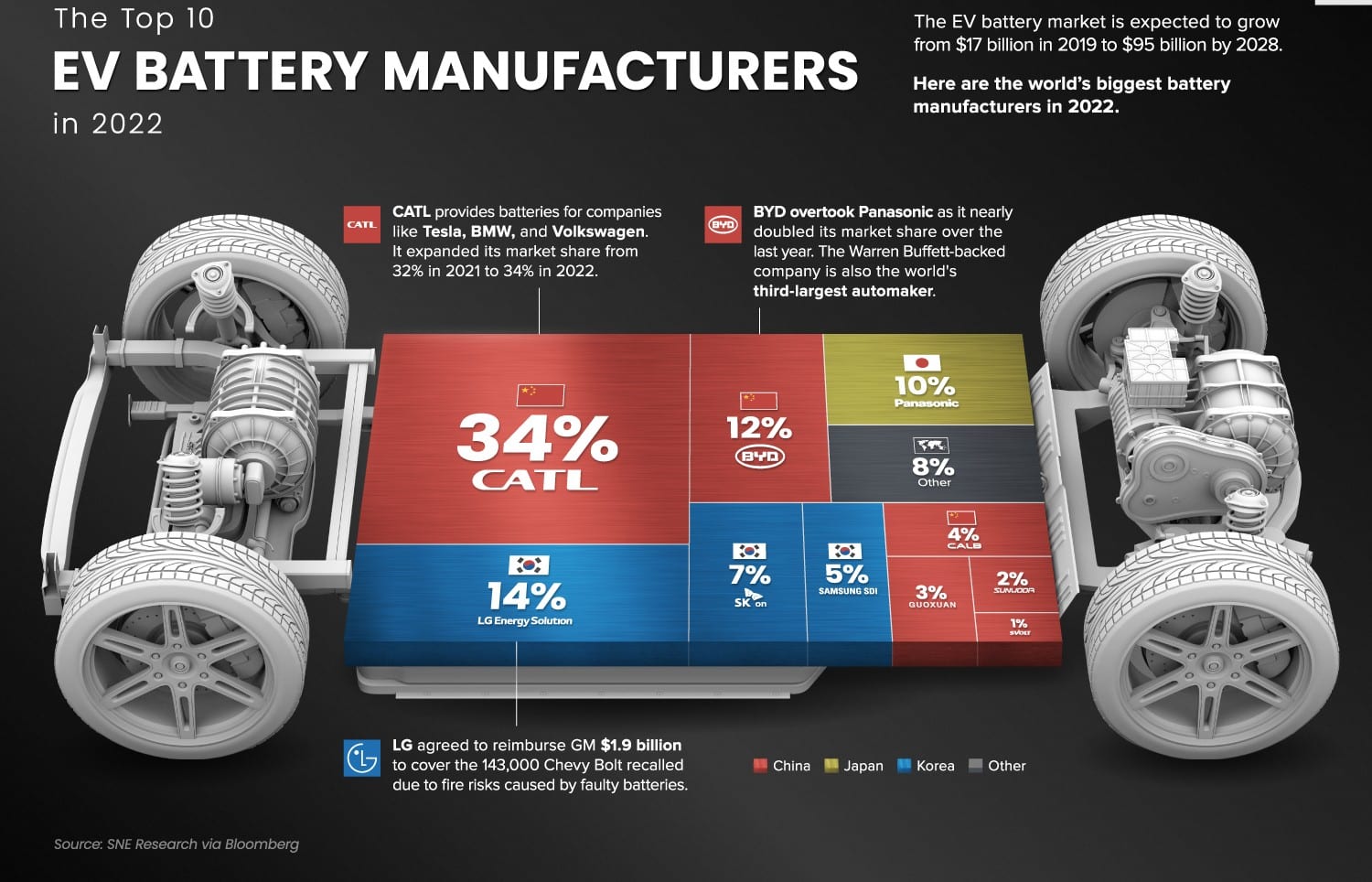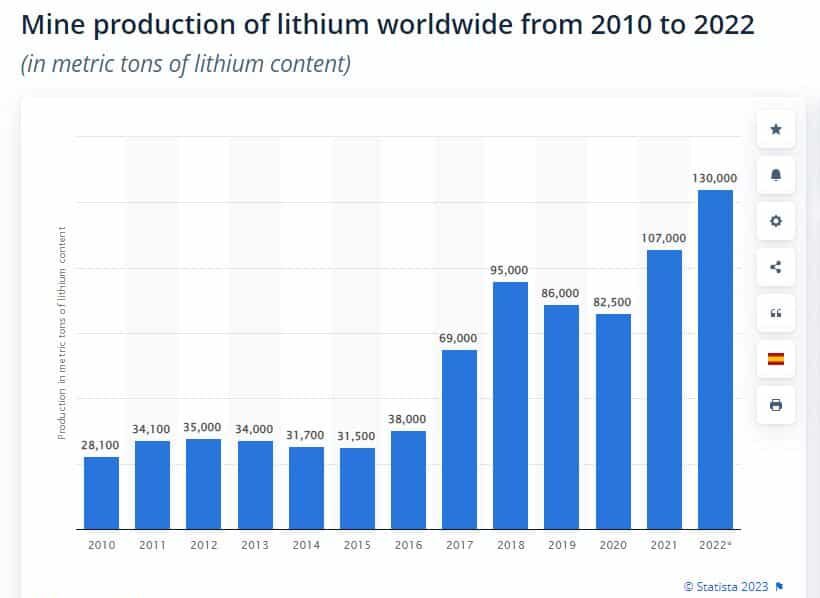Lithium, a.k.a. “white gold” has never been more in demand today – this soft, silvery metal makes electric vehicle (EV) batteries store more energy and live longer.
Whatever device you’re using right now in reading this article is most likely powered by a lithium-ion battery. And if you are driving an electric car, this battery powers it up as well.
Demand for battery-grade lithium will grow sharply in coming years as the EV and energy storage sectors continue to rise. Lithium-ion batteries are a vital component in transitioning to a low-carbon global economy.
And with EVs representing 10% of total global car sales, battery makers struggle to source more lithium.
So, how does lithium actually get from the earth to your EV and how does this battery really work? You’ll know in this article.
We’ll explain how this metal is extracted and how it works to power electric devices and EVs. Plus, you will also learn important facts and figures about the lithium market, and how bullish it can get.
But let’s get down to the basics first, starting with the metal element itself.
What is Lithium?
Lithium (Li) is the lightest of all metals, particularly belonging to the group of elements called alkali metals. It’s highly reactive or always wants to shed electrons. It also has the lowest density and can store a lot of energy in a small space, making it ideal for making batteries.
Dubbed ‘white gold’ because of its soft, silvery-white look, lithium has been the key metal used in manufacturing rechargeable batteries not just for EVs but for many other devices like laptops and mobile phones.
EV carmakers prefer lithium-ion batteries as they’re lightweight and can be quickly recharged.
As used in batteries and EVs, lithium comes in two major types – lithium carbonate and lithium hydroxide.
Lithium carbonate has a wide range of industrial uses. Apart from manufacturing EV batteries, lithium carbonate is also useful in producing flooring treatments, cement densifiers, adhesives, and alloys. The compound is even listed by the World Health Organization as an essential medication for treating bipolar disorder.
Lithium carbonate can also be converted to lithium hydroxide, which is preferred in manufacturing higher-performing and longer-lasting EV batteries.
Some of the world’s biggest producers of the alkali metal make both types of lithium while smaller ones focus on producing only one type. So how do they extract this metal and make it ready to power your electric car?
How Does Lithium Get from the Earth to EVs?
Right now, there are two major ways to extract lithium from the Earth:
- Conventional lithium brine extraction: salt-flat brines
- Ore mining: lithium rock deposits
In the U.S., the substance is mined from watery, salty brines or so-called ‘salars’.
So far, there’s only one lithium mine in the country, found in Silver Peak in Nevada shown above. But more refinery plants will pop up soon as the demand for the metal soars.
In fact, Tesla broke ground at the site of its new lithium refinery in Texas, the first of its kind in North America. It will cost the leading EV maker about $1 billion to complete.
The bulk of today’s commercial lithium production is from suppliers that extract lithium from salars. Most of this mining happens high up in the Andes, in the Lithium Triangle – where Argentina, Chile, and Bolivia meet.
Mining lithium from brines is pretty straightforward but is a time-consuming process.
Salty water from underground is pumped to the surface and into a series of evaporation ponds. For a period of up to two years or earlier, the water evaporates, and the brine changes composition. This also changes the color of the pools into a brighter blue.
Then a slurry of lime and sodium carbonate is added to the brine to remove impurities and other unwanted elements. When lithium concentration is high enough, the brine is pumped to a recovery facility for filtration of the metal.
Once the brine dries up, it leaves behind a white powder that needs more purification. After the powder went through its final chemical transformation, it now becomes a solid metal ready for use in batteries.
In sum, here are the major steps involved during Li brine extraction:
- Brine purification to remove impurities
- Chemical treatment to get desirable materials and byproducts
- Filtration to get rid of the unwanted solids
- Another treatment to precipitate lithium
- Washing and drying to turn the element into the final material
Another way to produce white gold is through ore or hard rock mining.
Soft Metal from Hard Rocks
There’s more lithium found in hard rocks than there’s in salty brines. But this process needs heavy equipment to dig out the element and is very noisy.
Kings Mountain in North Carolina has some of the highest-grade lithium deposits in rocks. It once supplied most of the world’s lithium. But it stopped when it was cheaper to get lithium from brines in other parts of the country.
Among the many ores containing lithium, spodumene is mostly used in commercial production.
After digging out the ore, it’s crushed and roasted at high temperatures (2012°F or 1100°C). It is then cooled off, milled, and roasted again with sulfuric acid at a lower temp – 250°C. This is known as acid leaching wherein hydrogen in the acid is replaced with lithium ions to produce lithium.
According to Tesla, they’ll be using innovative acid-free lithium processing in their Texas refinery. The process will use less hazardous reagents and produce usable byproducts such as sand and limestone.
Same with the brine-based method, lime is used to remove the unwanted magnesium from spodumene. Then soda ash is also used to produce lithium carbonate from the filtered solution.
Australia accounts for the bulk of the world’s lithium production from ore. Smaller ore mining operations are found in Brazil, Portugal, Africa, and China.
Industry estimates also show that additional mines will be online in North America and Finland by 2025. This would bring more supply to the growing market for lithium-ion EV battery production.
Now, how exactly does a lithium EV battery work in powering devices and cars?
How Does a Lithium EV Battery Actually Work?
An electric battery is a compact sandwich of metal sheets, foils, and films stacked together. By placing lithium within this sandwich, it produces electricity.
Each battery is a densely packed collection of lithium-ion cells, usually in cylinder or pouch shapes. Each and every cell contains a positive electrode called the cathode and a negative electrode known as the anode.
Cathode often contains metal oxides such as nickel, manganese, with cobalt as a common choice. It is where lithium atoms are found. An anode is commonly made of graphite that allows lithium to be inserted or interjected between it.
In between the cathode and the anode is a liquid solution called an electrolyte. It is the one that enables lithium-ion to move between the two electrodes. In other words, the cell basically works by ping-ponging the lithium ions and electrons back and forth.
There’s also a porous separator in the middle of the sandwich for safety. It keeps the positive and the negative electrodes from coming into direct contact with each other.
During the charging cycle, the introduced electric current splits the electrons from the lithium atoms in the cathode. The lithium ions flow to the anode via the electrolyte and get reunited with their electrons. Meanwhile, the electrons move around the outside circuit going to the anode.
During the discharge cycle, the process simply reverses. Lithium atoms in the anode split from their electrons again as the ions pass through the electrolyte. All the while, the electrons flow through the outside circuit, powering up the car’s motor or other electronic devices.
Here’s a quick visual explanation of how this process works.
The process can be repeated countless times, explaining why lithium-ion batteries are great for EVs. While the battery’s charging capacity degrades over time, it can last from 10 to 20 years.
These EV batteries can hold a huge amount of energy in tight spaces like a car floor. The electric car can drive for several hundred miles, about 100 to 300 miles, or 300km to 500km. That’s long enough to travel on just one charge cycle.
But one more question persists: is lithium production for batteries sustainable enough to fulfill the dream of the EV revolution? Let’s now take a peek at the market and how bright its future looks.
What You Need to Know About the Lithium Market
According to market predictions, EVs will make up over 50% of new passenger car sales in the US by 2030.
- One estimate says that the potential growth of the battery market would need 90 more facilities the size of the Tesla Gigafactory over the next decade.
Remarkably, the Nobel Prize winner M. Stanley Wittingham, who laid the foundations for the EV batteries used today, once noted that the critical metal will remain important in the long term. He specifically said that “it will be lithium for the next 10 to 20 years.”
Indeed, the lithium market is rapidly changing. The price of a lithium battery accounts for 40% of an EV’s production costs. No wonder why EV makers like Tesla, Ford, and BYD are on the hunt for better, cost-efficient options.
What further makes investors bullish on lithium is these four things.
Top 4 Factors Powering Up Lithium Demand
#1. The drive to reach net zero or carbon-free energy
The International Energy Agency (IEA), composed mostly of rich nations, pledges to be net zero by 2050. Net zero means balancing out the amount of carbon emitted with the same amount of carbon removed or reduced.
In their bid to reduce carbon emissions, some countries ban the sale of new fossil fuel-powered vehicles. They are formally called ICE – internal combustion engine vehicles.
For instance, South Korea and Norway will start the earliest ban in 2025. Other countries like the UK, Japan, India, and the Netherlands will do it in 2030. Others like Canada and China will enforce the banning of ICE one more decade later in 2040.
Interestingly, the U.S. aims that EVs will account for more than 20% of its new vehicle sales by 2030.
#2. Automakers’ Pledge to stop ICE vehicle production
In response to governments banning plans, carmakers are starting to phase out ICE car sales by 2040. These include giant automakers like GM, Mercedes, Ford, and BYD, among others.
To achieve this goal, car companies need to spend a whopping $510+ billion on making EVs and their batteries. By the end of this decade, about ⅓ of that amount will go to making EV batteries and buying their components.
What’s even more notable is that the German automaker, Volkswagen, commits over $110 billion to EVs and batteries (about half of the total European car manufacturers pledge). That’s obviously because of the European carmaker’s goal of selling millions of EVs over the next decade.
#3. EV incentives are out
To further attract EV buyers, rich nations are giving out more incentives. For instance, EV owners may be exempted from certain taxes and can even earn energy rebates for going green.
Hence, even during the peak of the COVID-19 pandemic, EV sales are still going up, which also fuels up lithium demand. Countries with electric vehicle policies in place are the ones with high EV sales that broke records. These nations are China, the UK, the US, Germany, Norway, France, and New Zealand.
#4. Governments provide sector stimulus
This is particularly the case in the US when Biden’s administration signed the Inflation Reduction Act. The $1 trillion historical law will support sectors and initiatives that promote a low-carbon economy. Under the Act, electric car makers can be eligible for a tax credit for making EVs, building new facilities, and making EV batteries.
The law also offers up to $22 billion in loan grants for new and existing EV facilities. It also covers the public transit and government fleet, providing $3+ billion to buy zero-emission vehicles (ZEV). All these numbers mean more raw materials are needed which, of course, particularly include lithium.
China Takes the Lead
According to BloombergNEF, global lithium cell production capacity will rise to reach more than 1,760 GWh in 2025. And China still dominates the market with a 63% share, followed by Europe (15%) and the US (9%).
Global Lithium Cell Production, 2020 vs. 2025
China also produces most of the world’s anodes and cathodes which are vital for making lithium-ion batteries. And through 2030, the IEA forecasts that most of the world’s EV battery production capacity will still be from China.
Moreover, Chinese companies make up over half of the EV battery market. The Chinese Contemporary Amperex Technology Co. Ltd. (CATL), in particular, is the world’s largest lithium-ion battery manufacturer. They supply lithium-ion batteries to leading EV manufacturers such as Tesla, BMW, Peugeot, and Volkswagen, among others.
According to data from Bloomberg, represented by the Visual Capitalist, here are the top ten EV battery manufacturers in 2022.
While government support is soaring in the US, Europe, and South Korea, China will likely remain the leader in the EV lithium-ion battery market.
Lithium Price: What Comes Next?
To date, the biggest lithium company Albemarle sees demand for the white gold to outrun supply, rising to almost 4 million metric tons in 2030 up from about 2 million metric tons in 2025. The mining giant revealed plans to invest $1.3 billion in a lithium processing facility in South Carolina last March.
The company’s Silver Peak site in Nevada is currently the only one operating a lithium mine in the US. It supplies around 6,000 tons a year of lithium carbonate, accounting for only 1% of the global lithium carbonate supply.
The US Geological Survey reported that the US has 750,000 tonnes of recoverable lithium in 2021. This will rise as new lithium reserves are discovered and established.
As seen in the chart below, global lithium production grew by 21% in 2022 compared to 2021, exceeding the highest level in 2018. The soft metal’s price surged 1,078% from 2020, before reaching a record high last year.
Per Tesla and SpaceX CEO, Elon Musk, the average price of lithium per tonne was at a staggering $78,032/tonne in 2022. But now that price has pulled back, it appears the market will outweigh the fear of oversupply.
Yet, as the bulk of today’s lithium production is located in places experiencing high water stress, concerns over supply remain. But if what Musk said is true that there’s no shortage of lithium because it’s found almost everywhere, the biggest challenge would be how to extract and refine it.
If that is all fixed, then it may not be a problem to meet the soaring demand for EV lithium-ion batteries.

